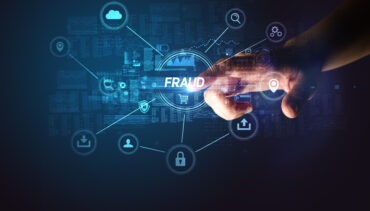
Blockchain, which keeps track of all transactions, makes an excellent tool for financial services, particularly contactless payments.
The global payment industry has seen massive growth in recent years, be it mobile payment apps like Alipay or online payment systems like PayPal. This growth is credited to technologies like Near Field Communication and Radio Frequency Identification, which enable payment devices to communicate information and hence, have made contactless payments possible.
These technologies work by using an embedded chip in a device, which then allows instant payments by waving or tapping it over a reader. The communication between reader and device is done over radio waves, which means that both should be in proximity in order to make the transaction occur.
See also: How Companies are Using Blockchain to Transform Business
Contactless payment devices include smart cards, debit and credit cards, smartphones, key fobs, and others. While this method is fast and easy, it still has security loopholes. The main challenge is that there isn’t any way to verify merchant outlets and also find out if they were exposed to risk in the past. Hence, a customer may fall victim to a cyber-criminal where they steal their financial information by intercepting wireless signals from their device.
Enter Blockchain Technology
Blockchain, a distributed database system, records and maintains a list of transactions that take place in real-time. Records on blockchain are time-stamped with high-level data encryption, hence making them indisputable and tamper-resistant. For instance, imagine you have a cash note which comes with an encrypted data ledger. It carries the details of every transaction it has done during its entire lifetime. When you receive the note, you have the entire transaction history with you. You can make a decision whether the person handing over the note to you is worth transacting with or not. This feature is what blockchain basically provides. It provides an additional layer of trust and security to ensure that both parties come out safe and satisfied with a transaction.
When paying through a blockchain contactless payment system, customers can find out if the merchant they are dealing with has been fair or fraudulent in past transactions. This is possible because the system will record all instances of fraud by the merchant and share this data with new customers to keep them warned. Since the data is stored in an encrypted ledger, the merchants are unable to change it.
In a similar way, merchants can also identify a fraudulent customer and take precautions. Hence, a system that is powered with blockchain contactless payments does not give an upper hand to any of the parties.
In addition to ensuring better security, blockchain can also make efficient payment processes possible. According to a report by Deloitte, the integration of the two technologies reduced overall costs for institutions. It is further very likely that new advantages of blockchain will become known with the advancement in technology.
Security Benefits of Blockchain for Mobile Wallets
Secure Transactions
The foremost challenge mobile payments face is security, and that is where blockchain provides the biggest benefit. It can prevent price-scoring, duplicate spending, and online fraud. Similarly, with cash and check being a thing of the past, soon, plastic cards are going to take a backseat with mobile wallets taking the front place. But since mobile wallets face a big challenge of overcoming security threats, blockchain can cater to its safety features such as multi-signature for buying verification.
Blockchain can authorize, authenticate, and audit the data. With its decentralized nature, it also eliminates the need for a third party and doesn’t have a single point of failure. It works as a shared, public, and universal ledger and creates confidence and consensus between two parties that are directly communicating.
Peer-to-Peer Lending
Peer-to-Peer lending is the latest trend in the payment industry. However, we regularly hear stories of online fraud where people send money by trusting an individual who promises to deliver a good or service and then disappears. With the help of blockchain, borrowers can directly take a loan from the lender through their mobile devices. This greatly reduces the hassle and bypasses the paperwork involved in traditional banking systems. Additionally, the inherent trust factor associated with blockchain also helps protect people for their blockchain transactions with the help of smart contracts.
Integration with Smart Devices
Other than smart phones and tablets, mobile payments can now be done with IoT devices such as watches, rings, and bracelets. Using blockchain, a user can save their payment information in any smart device without having to worry about fraud.
Other Applications of Blockchain
Faster Payments
With mobile wallets, the users naturally have an expectation for transactions to occur instantly, which is generally not the case. It usually takes time for a transaction to be successfully completed. With transactions occurring over blockchain platform, all transactions can be processed much faster across the borders.
Reward Programs Management
Mobile is successfully being used as a platform to manage rewards. Blockchain technology can take it from here to the next level and improve the points trading process. Since all transactions are stored in a public ledger, businesses can check and monitor how the points are traded, which is not easy for them at present.
Conclusion
At the core, blockchain serves as a complete record book by keeping track of all transactions. This makes it an excellent tool for financial services, particularly contactless payments. With all this taking place so swiftly, we are left to wonder if blockchain is the future of the payment industry.





























